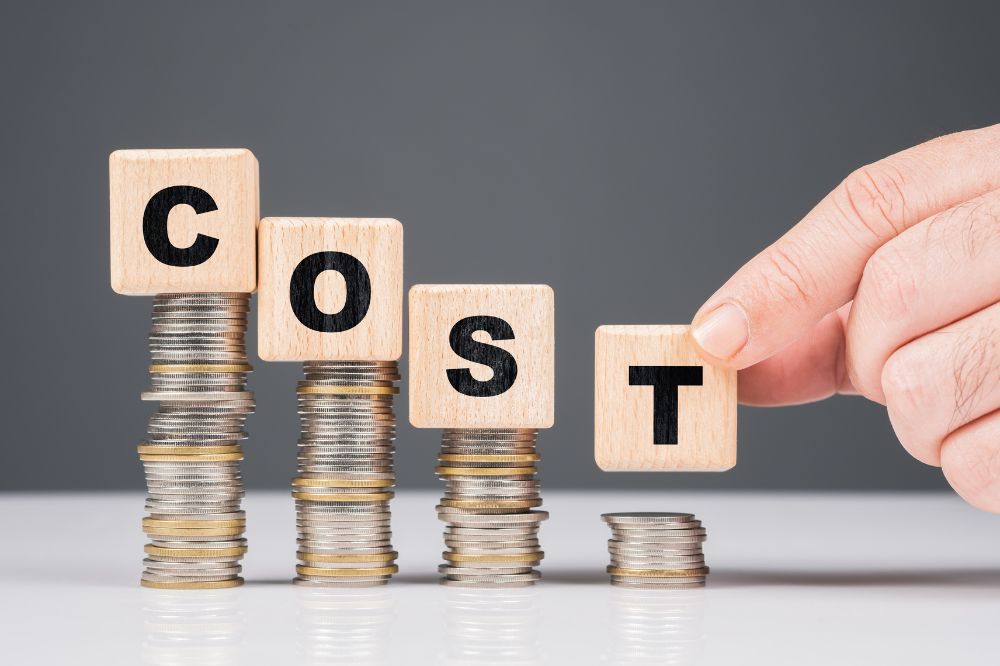Did you know that nearly 20% of bankruptcies involve spouses, with one being the filing spouse, who are either going through a divorce or recently divorced? Facing financial challenges during a divorce can be overwhelming, but there is a lesser-known option that could provide relief – joint bankruptcy filings. By filing a joint petition for bankruptcy together, divorcing spouses can streamline the divorce matter, reduce costs, and address shared debts more efficiently while involving creditors. This unique approach allows both parties, including the filing spouse, to work towards a fresh financial start while navigating the complexities of ending a marriage and addressing creditors.
Key Takeaways
- Timing Matters: Coordinating the timing of bankruptcy and divorce proceedings can have significant financial implications. Consider seeking professional advice to navigate this crucial decision effectively.
- Financial Synergy: Joint bankruptcy filings for divorcing couples can offer financial benefits, such as shared costs and streamlined processes. Evaluate if this option aligns with your financial goals.
- Legal Guidance: Understanding the legal considerations surrounding joint bankruptcy filings is essential. Consult with legal experts to ensure compliance with regulations and protect your rights.
- Preparation is Key: Properly preparing for a joint bankruptcy filing involves gathering all necessary financial documents, understanding the implications, and planning for life after bankruptcy.
- Learn from Case Studies: Examining real-life case studies can provide valuable insights into the challenges and successes of joint bankruptcy filings for divorcing couples.
- Financial Recovery: Remember that life after bankruptcy is a journey towards financial recovery. Stay committed to rebuilding your financial stability and seek support when needed.
Bankruptcy Basics
Filing Types
Joint bankruptcy filings for divorcing couples typically involve two options: Chapter 7 and Chapter 13. In a Chapter 7 filing, assets are liquidated to pay off creditors’ claims before discharge. On the other hand, Chapter 13 involves a repayment plan over three to five years for creditors with claims. Eligibility for Chapter 7 is based on income, while Chapter 13 requires a stable income for repayments.
Choosing between Chapter 7 and Chapter 13 can significantly impact divorce proceedings. Chapter 7 can help eliminate joint debts, easing the financial burden during divorce. However, it may also lead to the liquidation of shared assets. Chapter 13, while allowing asset retention, requires a structured repayment plan that could affect post-divorce finances.
Process Overview
The process of joint bankruptcy filing during a divorce involves several key stages. Initially, both parties must complete mandatory credit counseling within six months before filing. Subsequently, detailed financial information must be provided, including income, expenses, assets, and debts. Legal documentation such as petitions and schedules are then filed with the court.
Legal guidance is crucial throughout the joint bankruptcy process for divorcing couples. Attorneys can assist in navigating complex paperwork, ensuring compliance with legal requirements, and representing clients in court hearings if necessary. Legal professionals provide valuable advice on protecting assets and understanding the implications of bankruptcy on divorce settlements.
Impact on Credit
Joint bankruptcy filings have a substantial impact on the credit scores of divorcing couples. Both individuals will experience a significant decrease in their credit scores following bankruptcy. This negative mark can stay on credit reports for up to ten years after filing.
The long-term effects of joint bankruptcy on individual credit reports include limited access to new lines of credit and higher interest rates when approved for loans or credit cards. To rebuild credit post-bankruptcy, individuals should focus on timely bill payments, responsible credit card usage, and regularly monitoring their credit reports for inaccuracies or improvements.
Divorce and Finances
Asset Division
Divorcing couples facing joint bankruptcy must divide assets, including marital property, equitably. The bankruptcy court oversees the asset division process to ensure fairness. Strategies like asset valuation and negotiation can help protect valuable assets from liquidation.
Debt Responsibility
In joint bankruptcy, divorcing couples share responsibility for debts incurred during the marriage. The bankruptcy filing affects how debts are repaid, potentially discharging some obligations. Negotiating debt responsibility during divorce proceedings is crucial to avoid financial burdens post-bankruptcy.
Alimony Considerations
Joint bankruptcy impacts alimony payments as it can affect the ex-spouse’s ability to pay or receive alimony. Alimony agreements may be subject to modification due to the bankruptcy process. Navigating alimony considerations during joint bankruptcy requires legal advice and understanding of bankruptcy laws.
Timing of Bankruptcy
Before Divorce
Before initiating a joint bankruptcy filing during divorce proceedings, it is crucial to prepare meticulously. Gather all financial documents, including debts, assets, and income records. Communication with your spouse is key to ensure both parties are on the same page regarding the bankruptcy process. Financial planning plays a significant role in setting the groundwork for a successful joint bankruptcy filing.
Effective communication before joint bankruptcy filing can prevent misunderstandings and conflicts during the process. Make sure both partners are aware of their financial situation and obligations. Documenting all assets and debts will streamline the bankruptcy process and help avoid potential complications.
Joint Filings Explained
Eligibility Criteria
To be eligible for a joint bankruptcy filing, couples must be legally married and have shared debts. The couple’s combined income should fall within the specified limits set by the court. Factors such as the type of bankruptcy, state laws, and the nature of debts can impact eligibility. Certain exceptions exist, like when one spouse has significant separate debts.
Pros and Cons
Advantages of joint bankruptcy include lower costs, streamlined proceedings, and shared responsibility for debts. However, it may affect both credit scores and limit future financial options. Comparatively, individual filings allow spouses to protect personal assets but could lead to higher overall costs and prolonged legal processes.
- Pros:
- Shared debt responsibility
- Lower costs
- Streamlined proceedings
- Cons:
- Impact on credit scores
- Limited financial options
- Potential strain on relationships
Process Steps
The first step in a joint bankruptcy filing is to gather all financial documents, including income records and debt details. Couples must complete credit counseling before filing their petition with the court. Throughout the process, both spouses must attend meetings with creditors and adhere to court-mandated requirements.
- Gather financial documents
- Complete credit counseling
- File petition with court
- Attend creditor meetings
- Adhere to court requirements
Navigating bankruptcy during divorce can be complex, requiring careful consideration of each step. Common pitfalls include failing to disclose all assets or liabilities accurately and missing important deadlines set by the court.
Financial Benefits
Debt Discharge
Joint bankruptcy filings can benefit divorcing couples by combining support payments and other debts into a single payment plan. This process simplifies payments and ensures that both parties share the financial responsibility evenly. Through joint bankruptcy, debts such as credit card balances and medical bills can be discharged, providing relief for the couple. However, it’s essential to note that certain obligations like student loans and tax debts may not be dischargeable post-bankruptcy. To manage these non-dischargeable debts effectively, seeking professional advice is crucial.
Asset Protection
When undergoing joint bankruptcy, couples can protect assets by utilizing specific strategies. One method is to take advantage of exemptions, which safeguard assets like primary residences or retirement accounts from liquidation. Couples can explore asset protection planning, which involves structuring assets in a way that maximizes protection during bankruptcy proceedings. By understanding the exemptions available and implementing sound asset protection strategies, divorcing couples can navigate the bankruptcy process more effectively.
Cost Savings
Joint bankruptcy filings for divorcing couples offer significant cost savings compared to individual filings. By filing jointly, couples can split the costs associated with bankruptcy proceedings, such as attorney fees and court expenses. This collaborative approach to bankruptcy not only reduces financial burdens but also streamlines the process for both parties involved. To maximize cost savings throughout the joint filing process, it is advisable for couples to communicate openly about their financial situation and work together towards shared financial goals.

Legal Considerations
Court Proceedings
Court proceedings in joint bankruptcy filings for divorcing couples involve appearing before a bankruptcy court. This court oversees the process, ensuring compliance with legal requirements. During these appearances, couples can expect to present financial information and discuss their joint debts.
The bankruptcy court plays a crucial role in reviewing the couple’s financial situation and determining how assets and debts will be divided. It ensures that both parties adhere to the bankruptcy laws and regulations throughout the process. Couples should prepare to provide detailed documentation and attend hearings as required by the court.
Legal Obligations
Divorcing couples filing for joint bankruptcy have legal obligations to fulfill. These include disclosing all assets, liabilities, income, and expenses accurately. The bankruptcy court imposes requirements such as attending credit counseling sessions and creating a repayment plan if necessary.
Failing to meet legal obligations during the joint bankruptcy process can have serious consequences. It may result in the dismissal of the case or even allegations of fraud. Couples must prioritize fulfilling their duties to avoid legal issues that could prolong the bankruptcy proceedings.
Attorney Advice
Seeking advice from experienced bankruptcy attorneys is crucial for divorcing couples navigating joint bankruptcy filings. Attorneys play a vital role in providing legal guidance, explaining complex processes, and representing clients in court. They help ensure that all paperwork is filed correctly and assist in negotiating terms with creditors.
Choosing the right attorney for handling joint bankruptcies is essential. Couples should look for lawyers with expertise in both bankruptcy law and family law to address all aspects of their case effectively. A skilled attorney can offer personalized advice based on the couple’s unique financial situation and goals.
Case Studies
Successful Joint Filings
Couples facing divorce and bankruptcy simultaneously often find solace in successful joint filings. These cases exemplify the possibility of navigating challenging financial situations together. One such example is the Smiths, who managed to finalize their divorce while filing for bankruptcy jointly. The key to their success was open communication and a shared commitment to resolving their debts.
Successful joint filings are often characterized by couples prioritizing cooperation and compromise. The ability to set aside personal differences and focus on financial stability is crucial. By working together towards a common goal, couples can streamline the bankruptcy process and ensure a smoother transition into post-divorce life. The Smiths’ experience underscores the importance of mutual respect and understanding during such trying times.
Challenges Faced
Despite success stories, divorcing couples embarking on joint bankruptcy filings also encounter significant challenges. Financial disagreements, emotional strain, and legal complexities are among the hurdles faced during this process. Overcoming these obstacles requires patience, resilience, and a willingness to seek professional guidance when needed.
Navigating joint bankruptcy as a couple demands effective communication and conflict resolution skills. Couples must address underlying issues that may arise during the process promptly. Seeking mediation or counseling can help mitigate conflicts and ensure smoother progress towards financial recovery. By acknowledging challenges openly and proactively seeking solutions, divorcing couples can overcome obstacles together.
Preparing for Filing
Documentation Needed
To proceed with a joint bankruptcy filing during divorce, filing spouses must gather crucial documents. These include income records, tax returns, asset valuations, and debt statements. Accurate and complete documentation is vital to ensure a smooth bankruptcy process. Organizing paperwork neatly can expedite the filing process and prevent delays.
Financial Assessment
Before initiating a joint bankruptcy filing, conducting a thorough financial assessment is crucial. This evaluation helps divorcing couples understand their current financial status, liabilities, and assets. By assessing finances beforehand, couples can make informed decisions about the most suitable bankruptcy path to take. Evaluating financial health ensures that both parties are prepared for the bankruptcy proceedings.
Choosing the Right Chapter
When considering joint bankruptcy, divorcing couples must decide between Chapter 7 and Chapter 13 options. Chapter 7 involves liquidating assets to pay off debts, while Chapter 13 entails creating a repayment plan over time. Factors such as income levels, asset ownership, and debt amounts influence the choice of bankruptcy chapter. Selecting the appropriate chapter based on individual financial circumstances is crucial for a successful outcome.
Life After Bankruptcy
Credit Rebuilding
After a joint bankruptcy filing, rebuilding credit is crucial for financial recovery. Start by obtaining secured credit cards to demonstrate responsible credit usage. Monitor your credit report regularly to track progress.
To improve credit scores post-bankruptcy, divorcing couples should focus on paying bills on time and keeping credit card balances low. Avoid new debts and prioritize existing payments to rebuild credit effectively.
Responsible financial behavior, such as budgeting wisely and living within means, plays a significant role in rebuilding credit after bankruptcy. Consistent positive financial habits are key to improving credit scores over time.

Financial Planning
Financial planning is vital during and after a joint bankruptcy filing to ensure long-term stability. Create a detailed budget that includes all expenses and income sources to regain control of finances.
Divorcing couples can benefit from financial planning by setting realistic financial goals and prioritizing debt repayment strategies. Seek professional guidance if needed to develop a post-bankruptcy financial plan for a secure future.
Establishing an emergency fund is essential for unexpected expenses post-bankruptcy. Financial planning helps divorcing couples make informed decisions about saving, investing, and managing money efficiently.
Co-parenting Finances
Joint bankruptcy can impact co-parenting finances, requiring open communication and cooperation. Clarify financial responsibilities post-bankruptcy to ensure the well-being of children remains a top priority.
Navigating co-parenting finances after bankruptcy involves creating clear agreements on expenses related to children’s needs. Encourage transparency in financial discussions and maintain mutual respect for effective co-parenting.
Maintaining open communication regarding finances is crucial for co-parents post-bankruptcy. Collaborate on budgeting for children’s expenses, school fees, healthcare costs, and other necessities to provide stability for the children’s upbringing.
Summary
You’ve learned how joint bankruptcy filings can offer financial relief during a divorce, considering the timing and legal implications. Understanding the benefits and challenges, along with real-life examples, prepares you for the process and what to expect post-bankruptcy. Now, armed with this knowledge, you can make informed decisions to navigate your financial future confidently.
Remember, seeking professional advice tailored to your unique situation is crucial. Take proactive steps towards financial stability by exploring joint bankruptcy filings for divorcing couples. Your journey to a stronger financial foundation starts now.
Frequently Asked Questions
Can both spouses file for bankruptcy during a divorce?
Yes, both spouses can file for bankruptcy during a divorce. Filing jointly can simplify the process and may be more cost-effective. However, individual circumstances vary, so it’s essential to consult with a bankruptcy attorney to determine the best course of action.
When is the best time to consider joint bankruptcy filings in a divorce situation?
The timing of joint bankruptcy filings during a divorce is crucial. It’s generally recommended to consult with a bankruptcy attorney early in the divorce process to understand your options fully. Factors such as assets, debts, and income should be carefully evaluated before deciding on filing jointly.
What are the financial benefits of filing for bankruptcy together as a divorcing couple?
Filing for bankruptcy jointly as a divorcing couple can help streamline the process and reduce costs. It allows both parties to address shared debts efficiently and may provide a fresh start financially post-divorce. Consult with a bankruptcy attorney to assess how joint filing can benefit your specific situation.
Are there any legal considerations unique to joint bankruptcy filings for divorcing couples?
When considering joint bankruptcy filings during a divorce, it’s essential to understand the legal implications. Issues such as asset division, spousal support, and creditor claims need careful evaluation. Consulting with both a bankruptcy attorney and a divorce lawyer can help navigate these complex legal considerations effectively.
How can couples prepare for joint bankruptcy filings amidst divorce proceedings?
Preparing for joint bankruptcy filings during divorce involves gathering detailed financial information, including assets, debts, income, and expenses. Collaborate with your spouse to ensure accurate documentation and disclosure. Seeking guidance from experienced professionals like bankruptcy attorneys and financial advisors can help facilitate the preparation process effectively.




